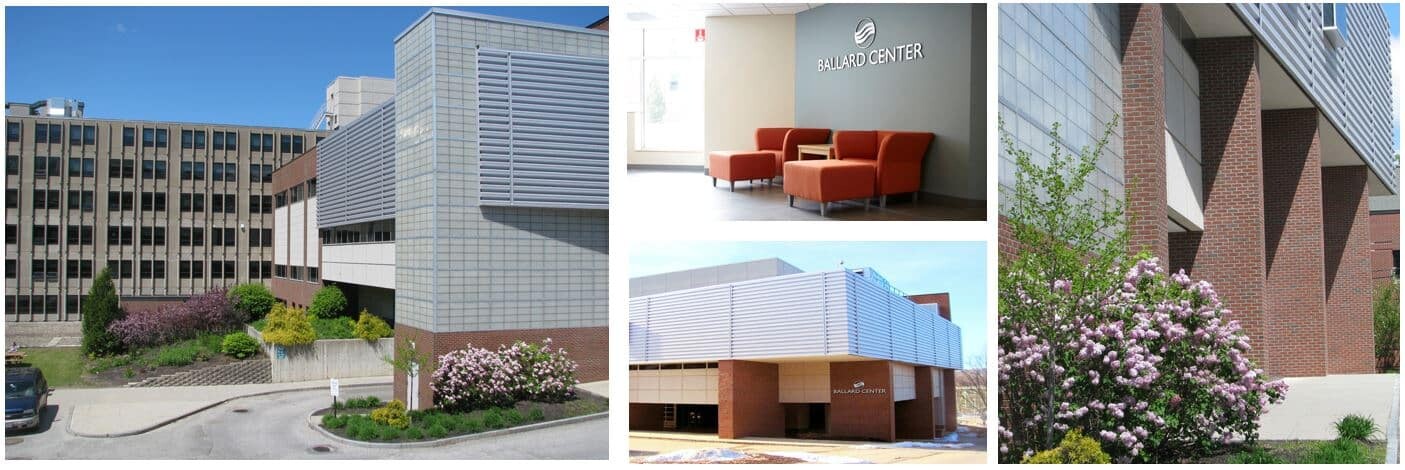The Right Equation for Responsible Development: Spotlight on the Ballard Center
In multi-part series, exclusive to the Maine Real Estate Insider, we’ll provide an up-close look at the most notable commercial development projects of the past year that are helping to fuel Maine’s economy in terms of investment and job creation. MEREDA is proud to recognize responsible development based upon criteria including environmental sustainability, economic impact, energy efficiency, difficulty of the development, uniqueness, social impact and job creation.
Please join with us in celebrating the Ballard Center in Augusta.

MEREDA: Describe the building and project.
Dirigo Capital Advisors: The Ballard Center was formally the location of Maine General Medical Center, a regional health care organization serving Central Maine. The hospital, after 111 years of continuous operations at the site, elected to consolidate operations with their Waterville affiliate. This new $330 million facility in North Augusta left MGMC with a tough choice – what to do with the existing 250,000 square foot, 20 acre facility located in the heart of Augusta’s East side on the Kennebec River. In 2013, Dirigo Capital Advisors purchased the building through an affiliate, and began the long process of repurposing this unique facility. Five years later, the project is a success with nearly 70% of the building occupied with health care, education and financial services tenants.
MEREDA: What was the impetus for this project?
Dirigo Capital Advisors: Maine General called upon us because we have a specific skillset in redeveloping difficult properties. They did not want to see it torn down and felt we were best suited to take on this difficult undertaking.
MEREDA: That sounds like quite a process. How long were you in the planning stages before construction started?
Dirigo Capital Advisors: 18 months.
MEREDA: Tell us about the most challenging aspect of getting this project completed.
Dirigo Capital Advisors: Like any specialized building, the Ballard Center was constructed around an initial design purpose which was to deliver emergency health care. As the area grew, the building was added on to. By 2012, the main facility was comprised of three connected structures all built for different functional areas. Taking that type of building – with eight operating rooms, a maternity ward and so on – and formulating a redevelopment plan that envisions an entirely new purpose – is very complicated. Making a building built for the needs of the 1950s work for the needs of the new area is not as easy as it sounds. Thankfully we have an exceptional partner in the City of Augusta who is supportive and helpful at every turn.
Perhaps the greatest challenge is the “big building” problem. On the day that you buy a giant empty building you are inheriting an unknown amount of capital issues, and certainly enormous operating expenses. There is a very, very tight time frame in which to meet objectives. Focus, planning and execution are especially important to avoid be swallowed whole by overhead.
MEREDA: Something unexpected you learned along the way was….
Dirigo Capital Advisors: How to repurpose a former operating room, there’s no manual for that.
MEREDA: Now that it’s complete, what feature of the project do you think makes it the most notable?
Dirigo Capital Advisors: It is hard to overstate the impact the alternative (demolition) plan would have had on the community. This project has been on the banks of the Kennebec for over a century, and its loss would have taken not only a toll on the immediate neighborhood but also on the region as well. The redevelopment has brought to Central Maine a renaissance of medical specialties. The building’s redevelopment plan was specifically designed to accommodate Maine General’s planned growth in specialties like dermatology where there was zero practice before, forcing patients to Southern Maine for care. Pediatrics are also a significant part of the footprint. Through this project, health care options for the area have dramatically increased but at a fraction of the cost of building new.
